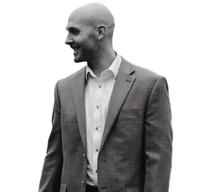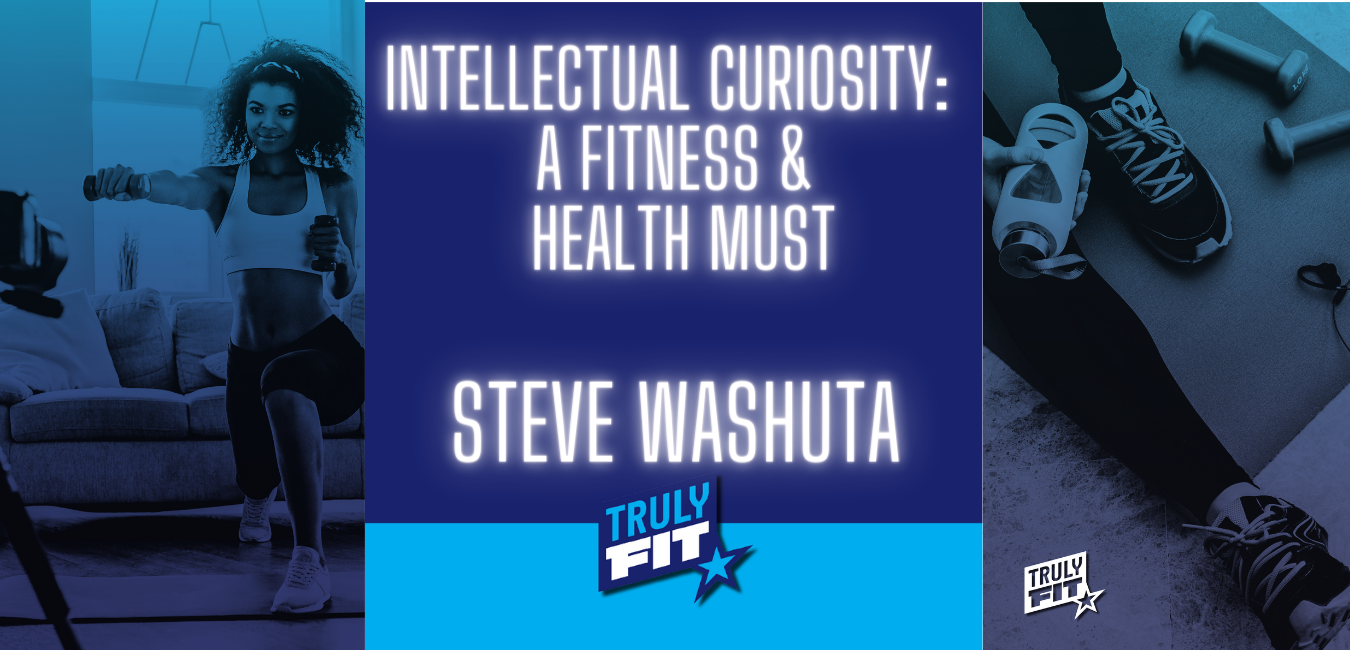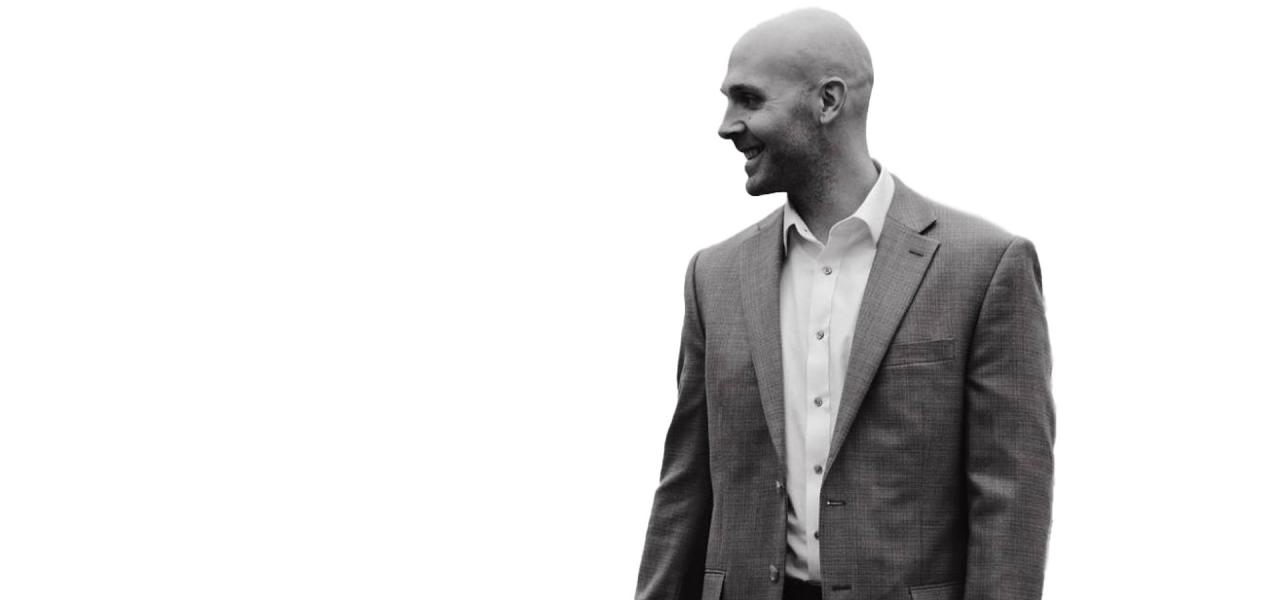
1 Issue: Many Treatments – Steve Washuta

Guest: Steve Washuta
Podcast Release Date: 3/10/2021
Welcome to Trulyfit the online fitness marketplace connecting pros and clients through unique fitness business software.
Steve Washuta: Welcome to the show fit Podcast. I am your host, Steve Washuta, co-founder of Trulyfit and author of Fitness Business 101. On today’s podcast that is just me discussing intellectual curiosity. What do I mean by that? Well, specifically in the fitness industry, being able to look at other ideas surrounding your job. So if I’m a personal trainer, there are going to be physical therapists and sports medicine doctors, orthopedics, and nutritionists. All these other people who are interconnected with health and fitness. How do they look at elements and issues? How do they diagnose? What are the things that they’re doing to help their clients?
You need to know that because your clients are going to be working with those people. Number one, you don’t want to step on toes. Number two, learning all of those different lenses in which people view things through is only going to help you better your clients.
I’m going to give an example of that and kind of walk you down that path and show you why it’s important to be intellectually curious. Don’t be afraid to both learn and bounce your ideas off of others in and around your industry. As a personal trainer, we do not diagnose injuries, as you know, but it’s important to know that there are telltale signs and tests. Imaging is typically needed to be truly accurate, but the tests and the signs give a high probability of the issue existing.
What is not clear, however, are the treatments and protocols for the issue always. Even as a corrective exercise specialist, I sometimes find it difficult trying to play anatomical sleuth and deciphering what issue to treat first. For instance, you know, if you’re a fitness industry teacher, you’ve definitely heard of the IT band. The iliotibial band extends from the iliac crest hip down to the lateral part of the thighs, a few inches above your knee to the distal lateral femur, that that part connects lower pastor kneecaps, the proximal lateral tibia, and that provides stability to the knee and assists with flexion and extension of the knee.
When clients have a knee hip or low back pain, the IT band is a check point to determine if whether or not that may be a culprit in the issue. So, you know, is the IT band causing the issues? Or is the knee issue causing a hip issue which is in turn causing an IT band issues? You can have IT band syndrome or greater trochanter syndrome and a host of other issues due to issues with the IT band.
It’s a very esoteric topic, right? It’s very in depth, it’s it’s hard to say if there’s any one answer. So, I’ve barely scratched the surface just by mentioning a few of those things. But for the sake of this, we won’t sort of unpack that anymore from from the anatomical specifics. But in dealing with potential IT band issues, I’ve had physical therapist told me you don’t stretch you don’t stretch it because the IT band is a tendon. It’ not that it’s tight, rather that it’s hip weakness and glute strengthening, that you should be treating more often than not.
I’ve had sports medicine doctors who disagree with that, and tell me the the assessment is to prescribe specific stretching routines, and rest those areas. I’ve had a lot of personal trainers who I really trust, who have a different way to go about it. They use myofascial release, typically, and claim the area is overworked due to compensation from synergistic dominance. So you know, none of these statements are false. All of those different treatments can potentially work and maybe they need to be fused together. My point of saying this is in treating ailments, the same ailment could have many treatments based on it’s complexities.
So learning the different methodologies and being intellectually curious is important. Every field of work is a little bit different. And it’s good to know what everyone is doing in and around your set field.
You’re gonna have clientele who come to you, and they may have worked with other fitness industry teachers in the past. They may also be going to a physical therapist or to a doctor, so you can’t pretend that you know it all. You also have to take into account with their other professionals are telling them and try to fuse these things together. Their other current or former health professionals certainly may have instructed movements different than you, their educational background may differ. They may cue things differently or explain things differently there is there’s a lot of gray area in the health and fitness world. Especially the nutrition world. So, don’t assume, without doing your due diligence, that the one way you’ve been taught is the only right way.
Working with challenging populations can further instill this urge to, you know, obtain more information from other professionals, even if the niche you work in. Let’s say you work with a younger population who typically have not as many serious medical issues or limitations. It’s still best to have some experience working with a challenging population. I talk about that all the time. It’s great to work with seniors, it’s great to see these anatomical issues and these health issues and these medications and understand further what you’re going to be dealing with. Ultimately the goal for you is to make sure that you set your clients up for a healthy life moving forward, right? It’s great if you want to get them six-pack abs, but that’s not going to help them when they’re 50 and 60 and 70.
Steve Washuta: You know, I really think it, you know, taking away your standard exercises is a good thing. So when you’re working with these more challenging populations, you’re gonna have to think outside of the box. You will have to make modifications, but it’s going to force you to get better at simplifying and yet also being creative. These protocols and routines will always change. They are dependent upon the individuals educational or historical background. So, it’s important to continue to learn in order to stay in line with the perspectives in current medicine.
In the past, personal trainers, recommended static stretching before exercising. If you were in any sort of phys-ed or gym class before the year 2005, you know, your gym, instructors also said that. Right now, the science tells us differently, where we dynamic stretch prior to exercise, to get the blood flow going. Then you know that we preferably static stretch, post-exercise to be the most advantageous at least that’s what most studies have said. That can change from time to time, right? It’s like the old adage of an egg. An egg is good for you one week and bad the next depending upon the news source. Things change all the time. There’s always new science, and we have to stay relevant and up to date on that.
The point is, you can find different differences of opinion. However, knowing the concepts and the approach to the patient should always be the same. Keeping their best interests in mind and using the knowledge and skill set you’ve acquired. Learning from others in the same field that have different approaches is important.
You need to be challenged to challenge the way that you interpret the issues, it’s gonna help you grow. You will more than likely start off conservative in your approach to any fitness medium. That’s that’s typically the arc of the fitness professionals. You start off conservative in your approach. As you as you continue to learn, you will find yourself gravitating towards specific teaching styles or modalities. You may even cling to some radical things in the middle of your fitness career. You’ll probably be a little bit of radical towards one thing or the other.
Eventually, most of us come back to the middle as we gain a dearth of knowledge from all other industries that touch ours. Wherever your road towards greatness as a fitness industry teacher takes you, you’ll need these steps:
- Learning and researching
- Going to conferences
- Getting new certifications
- Conferring with other fitness industry teachers
- Conferring with other professions that connect to yours
- Networking
- Digging into YouTube/Internet expert videos
- Looking at your clients problems through the lens of other experts
Thanks for joining us on the Trulyfit podcast. Please subscribe, rate, and review on your listening platform. Feel free to email us as we’d love to hear from you.
Thanks again!





